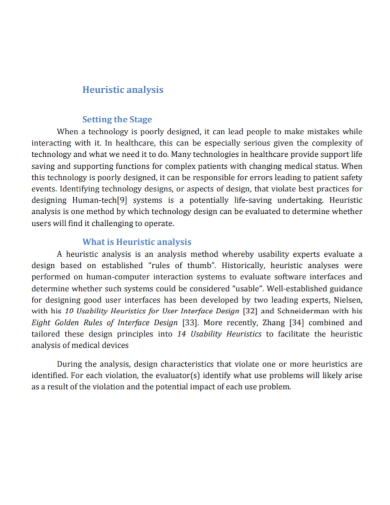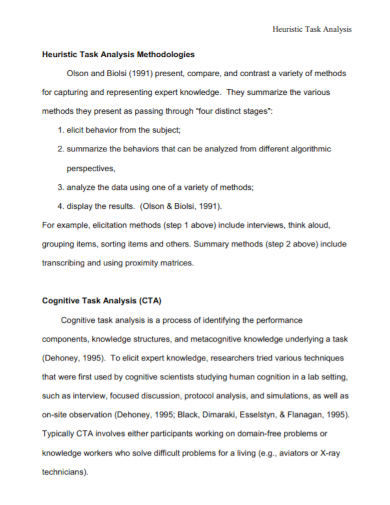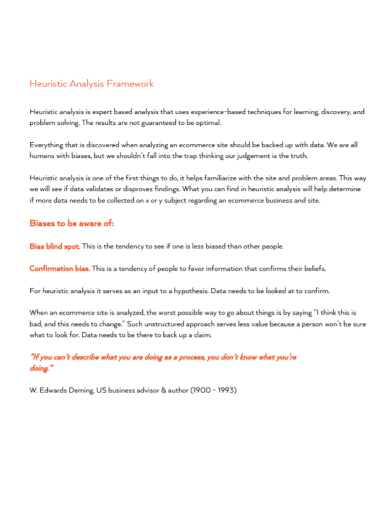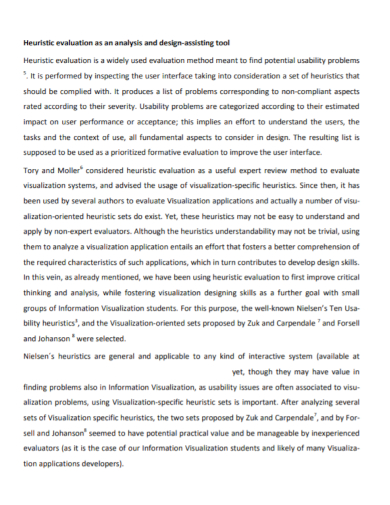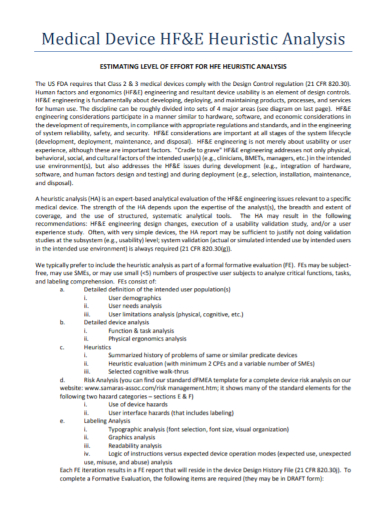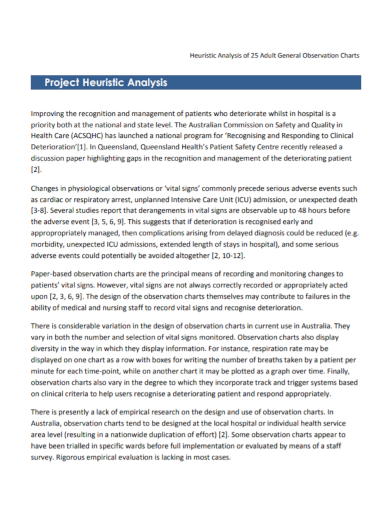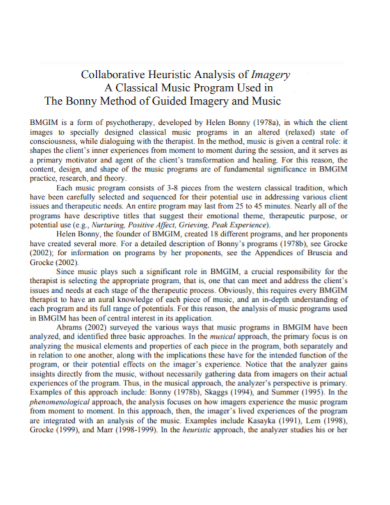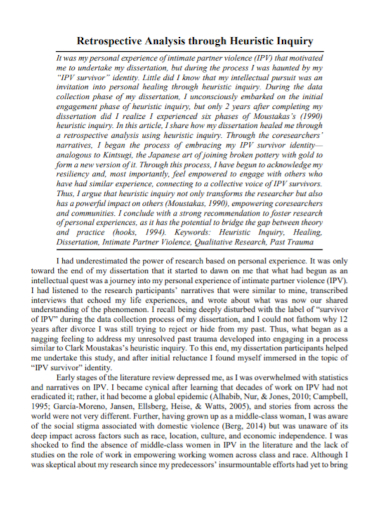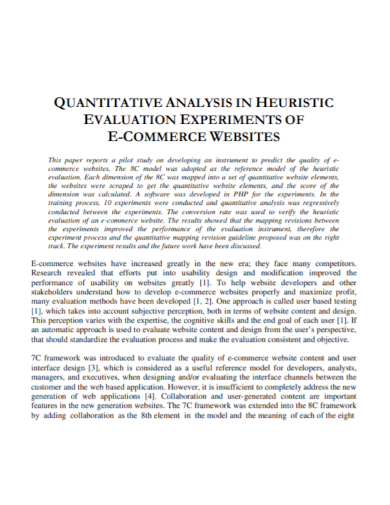Have you heard of the word “heuristic”? What does it mean? In some, heuristic means something that is similar to a rule or method. You are to discover something that would help you think through the issues to come up with a possible solution. It can be done through the process of elimination, trial and error and other means. The process of having a heuristic analysis is literally based on the rules of heuristics. It is done by experts and is used in interface designs to provide for an evaluation of a particular website, portal or application to be in lined with the heuristic principles.
10+ Heuristic Analysis Samples
1. Heuristic Analysis
2. Heuristic Task Analysis
3. Heuristic Analysis Framework
4. Heuristic Evaluation Analysis
5. Medical Device Heuristic Analysis
6. Heuristic Project Analysis
7. Collaborative Heuristic Analysis
8. Artificial Intelligence Heuristic Analysis
9. Retrospective Heuristic Analysis
10. Quantitative Heuristic Analysis
11. Heuristic Content Analysis
What is Heuristic Analysis?
A heuristic analysis is a type of analysis that is usually employed by computer antivirus programs. It also designed to determine how susceptible a system is with regards to a particular threat using any of the weighing methods. Most of the antivirus programs that use heuristic analysis performs by executing commands of a questionable program to allow it to simulate what would happen next if that specific suspicious file were executed while you keep the suspicious code isolated. It will start to analyze the commands and monitor for any viral activities that includes file overwrites and any serious attempts to hide the suspicious file. If any of these are being detected, that suspicious file will become a potential virus and the user will be notified as well.
Another known method of a heuristic analysis is to use a decompiler against a suspicious file. A decompiler is a type of computer program that creates a high level source file. The source code of the suspicious file will be compared to the source code of the virus. If it matches with the virus, the file will become a potential virus and the user will be notified.
Top 10 Heuristics for User Interface Design
This information is written by Jakob Nielson which has the most accepted and used in the design community. The heuristics are said to be under the visibility of system status. This means that the system should always keep the users notified about what is going on. It should match between the system and the real world. The system should be able to speak the same language like the user’s. It should provide user control and freedom. This means that it should provide an option to undo and redo.
It should follow consistency and standards. This generally means following the platform conventions. It should give an avenue for error prevention. This means that it should help in either eliminating the error-prone conditions or check them before committing the action. It should rather choose recognition than recall. The user should not carry the responsibility of remembering specific information. Instructions should be visible and retrievable.
It should also show flexibility and efficiency of use. This means that it should allow users to tailor their actions. It should have a minimalist and aesthetic design. Take note that dialogues should not contain information that are considered unnecessary. The heuristic analysis helps users recognize, diagnose and recover from errors to constructively suggest a particular solution. Plus, it would be better if the system provide help and documentation. In that way, it would be easier to focus on the user’s task.
FAQs
What are the three types of heuristics?
According the Kahneman and Tversky, there are three types of heuristics namely availability, representativeness and anchoring and adjustment.
Why do we use heuristics?
We use heuristics to solve problems and make judgements efficiently. It will allow users to function without having to pause for a time to think with regards to the next course of action.
How do we use heuristics in our everyday lives?
We can use heuristics in our everyday lives when we come to a point that we have to make decisions and judgements.
Heuristic analysis is something that has the capability to detect unknown viruses in software. It operates on the basis of comparing suspicious files to the code of the viruses. Aside from using heuristics in computer programs, we can also use and apply it to our daily lives. Check out some of the heuristic analysis samples in this article.
Related Posts
FREE 11+ Job Analysis Samples
FREE 11+ Sample Job Analysis
FREE 10+ Management Analysis Templates
FREE 10+ Customer Analysis Samples
FREE 10+ Sample Job Analysis Reports
FREE 10+ Sample Performance Analysis Reports
FREE 10+ Sample Data Analysis
FREE 10+ Sample Data Analysis
FREE 8+ Sample Job Task Analysis
FREE 7+ Analysis Essay Examples
FREE 10+ Stakeholder Analysis Samples
FREE 10+ Sample Hospital SWOT Analysis
FREE 10+ Business Systems Analysis Templates
FREE 10+ Sample Data Analysis
FREE 10+ College SWOT Analysis Samples

